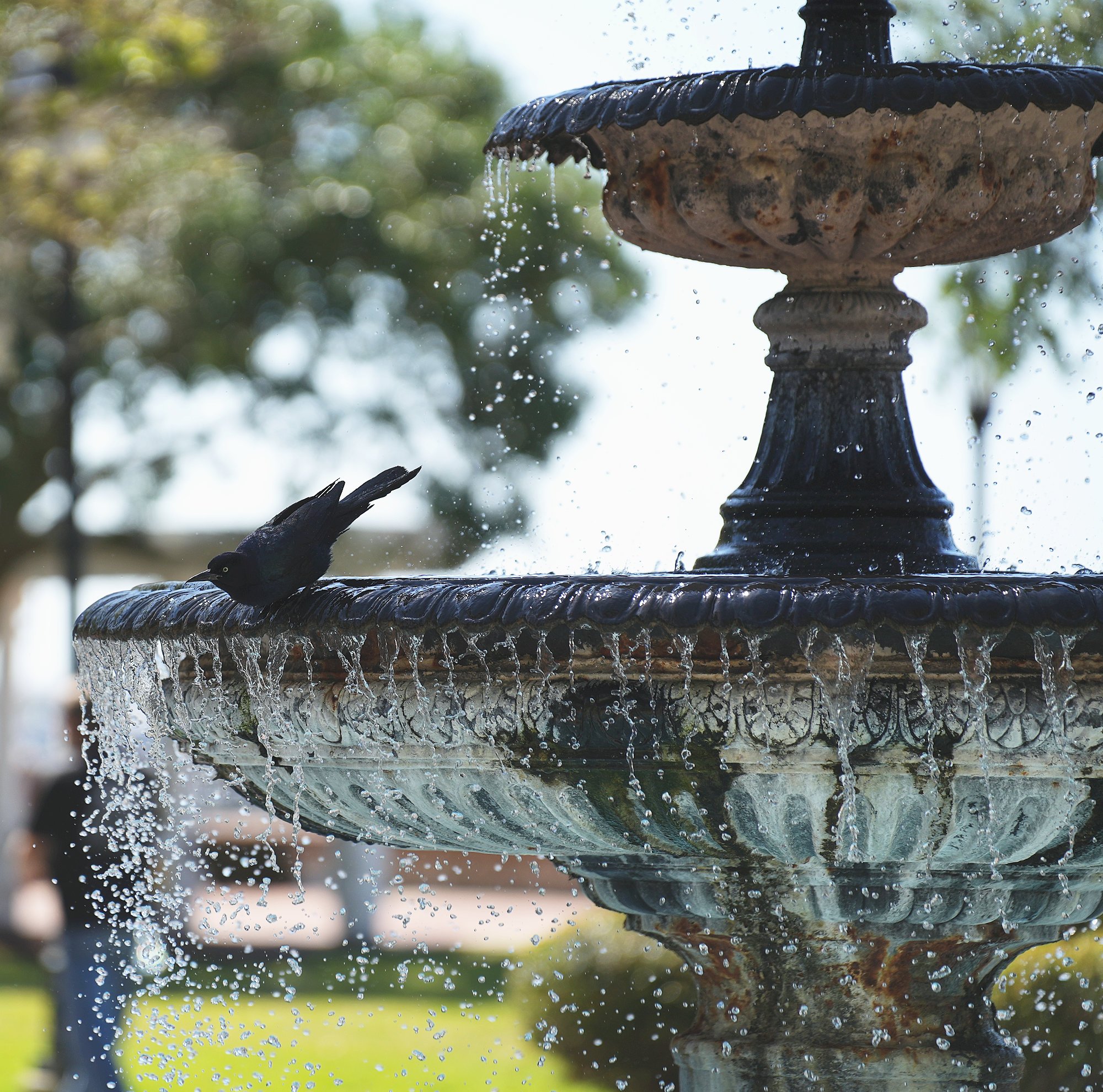

Ruins & Historic Sites
-
![]()
Pergola from the Carnegie Era
The pergola, situated adjacent to the Tabby House and the former polo field within the Dungeness Historic District on Cumberland Island, was built as an integral component of the Carnegie family's Dungeness estate. Climbing plants gracefully cover the pergola, offering both shade and cooler temperatures.
-
![]()
Mercury Statue (Plum Orchard)
The replica of a Carnegie-era statue of Mercury on Cumberland Island is a reproduction of a sculpture representing Mercury, the Roman god of commerce, communication, and travelers, originally from the time of Andrew Carnegie, a prominent American industrialist of the late 19th and early 20th centuries. This era, often referred to as the Gilded Age, was marked by rapid industrialization, great economic growth and often extravagant displays of wealth.
-
![]()
PLUM ORCHARD MANSION
Cumberland Island’s Plum Orchard, a mansion constructed in the Georgian Revival style in 1898 by Lucy Carnegie for her son George and his wife Margaret Thaw, was generously gifted to the National Park Foundation by the Carnegie family in 1971. This generous donation played a pivotal role in securing congressional approval for the establishment of Cumberland Island National Seashore. As part of the Lands and Legacies Tours, guided tours of the Plum Orchard Mansion are available daily for visitors to enjoy.
-
![]()
McIntosh Sugar Mill Tabby Ruins
The Sugar Mill Tabby Ruins can be found off Charlie Smith Sr. Highway in St. Marys, just beyond the Stimson gate to Kings Bay Naval Submarine Base. Exploring the grounds here transports you to the past. The ruins offer a splendid setting for capturing both informal and formal photographs and serve as an excellent outdoor wedding location. It also hosts a comfort station for the St. Marys Tabby Trail, a versatile pathway that, once fully completed, will stretch from Crooked River to downtown St. Marys, seamlessly connecting to the East Coast Greenway.
-
![]()
DUNGENESS RUINS
Thomas Carnegie and his wife, Lucy, constructed Dungeness in 1884 on Cumberland Island. However, it was destroyed by fire in the 1950s. The remnants of Dungeness offer a glimpse into the Carnegie family's lifestyle, including the remains of their once-luxurious vehicles. The original Dungeness dates back to 1783, and was constructed by Nathanael Green. Additionally, the Tabby House within Dungeness' grounds was built for Catherine, the widow of Revolutionary War Hero Nathaniel Greene.
-
![]()
First Presbyterian Church (1808)
The First Presbyterian Church of St. Marys is an architectural marvel and one of Georgia's oldest Presbyterian Church structures. Originally non-denominational, it transitioned to Presbyterianism when Horace S. Pratt, a young missionary from New Brunswick, N.J., arrived in St. Marys in 1821. He observed that the local religious spirit was minimal, existing in name only. In 1828, the Georgia Legislature formally incorporated the church as the First Presbyterian Church of St. Marys.
-
![]()
Providence Methodist
Located in the unincorporated area of White Oak, Providence Methodist is an absolute jewel of a pre-Civil War church, located in the wiregrass region of southeast Georgia. The church actually has roots going back to the 1830s when a previous church was demolished in a storm and the present one erected in Camden County on land donated in 1856 by David and Elizabeth Lang.
-
![]()
Oak Grove Baptist
The unassuming, shingle-covered building depicted above might seem ordinary at first glance. However, when considered within the framework of Georgia's historical tapestry, it gains significance. This edifice symbolizes the tenacity of early settlers in a secluded area, serving as a central hub for a rural community of White Oak, Georgia, near the Satilla River. It's a repository of tales encompassing affection, community bonds, redemption, and the myriad experiences of life and demise.
-
![]()
Burnt Fort Chapel
Meticulously reconstructed in 1977, mirroring the 1890s original. During the 1940s, the initial church was deserted and nearly vanished. Nonetheless, the Burnt Fort community in the unincorporated area of White Oak chose to resurrect it, leading to the creation of the unique and splendid wood structure that stands there today.
-
![]()
Woodbine Episcopal Church
St. Mark's Episcopal Church is located at 209 Bedell Avenue, Woodbine, Georgia. It was built in 1900 using local materials, including timber from the Satilla Bluff mills, which was about five miles east of town on the Satilla River's south bank. The church is a mission of the Episcopal Diocese of Georgia and it has a thriving congregation today.
-
![]()
Historic Oak Grove Cemetery
Historic Oak Grove Cemetery in downtown St. Marys was laid out in 1788 and draws visitors from all over the world, whether researching one’s family history or those just wanting somewhere peaceful and interesting to stroll as stately live oak trees provide a shady canopy. The bodies of soldiers from every U.S. war rest at this site.
-
![]()
Greyfield Inn
The Greyfield Inn offers exclusive lodging and fine dining on Cumberland Island and is the only lodging establishment available to the public on the island. This charming inn, built in 1900, offers breathtaking views of the Atlantic Ocean and the island's natural wildlife.












